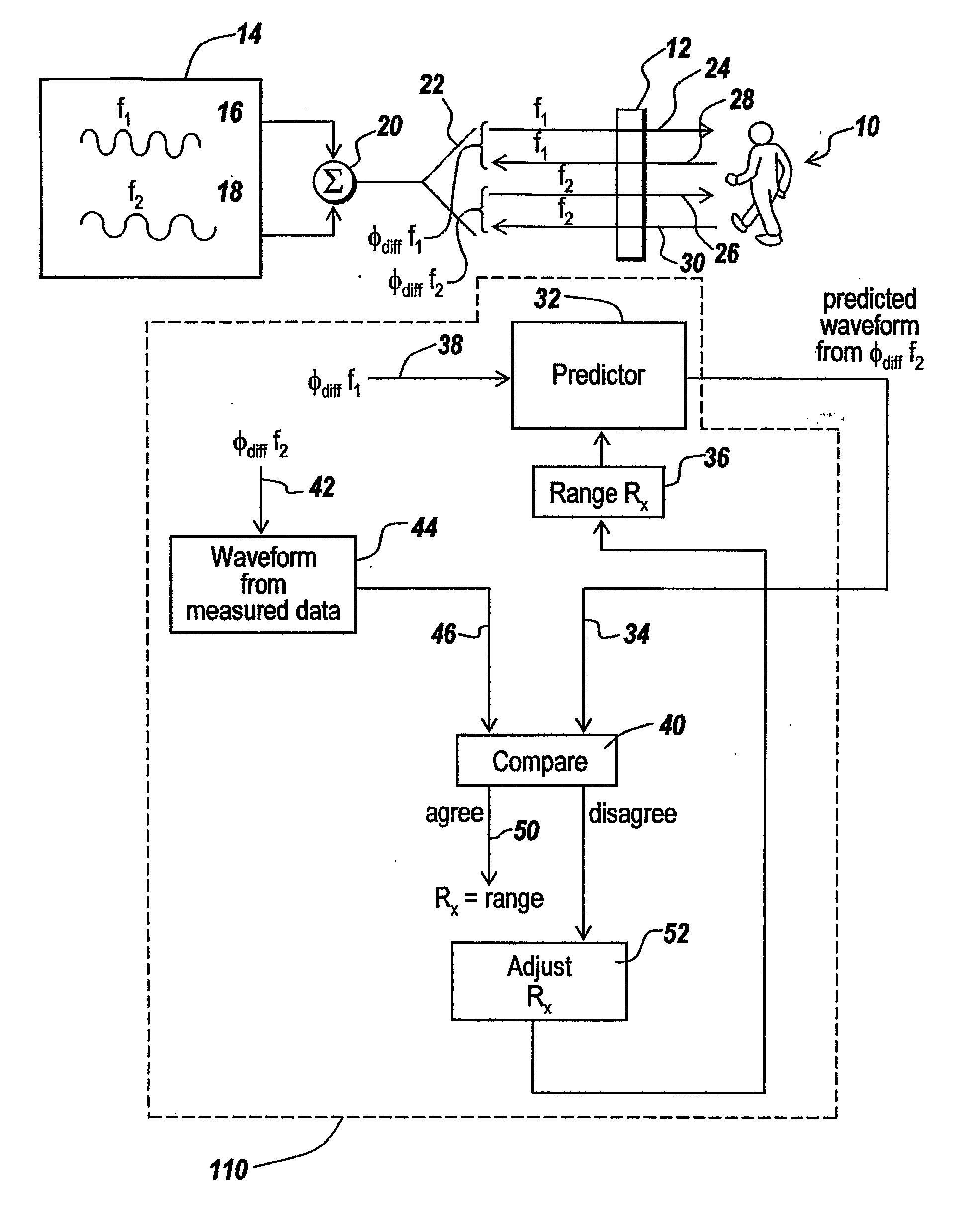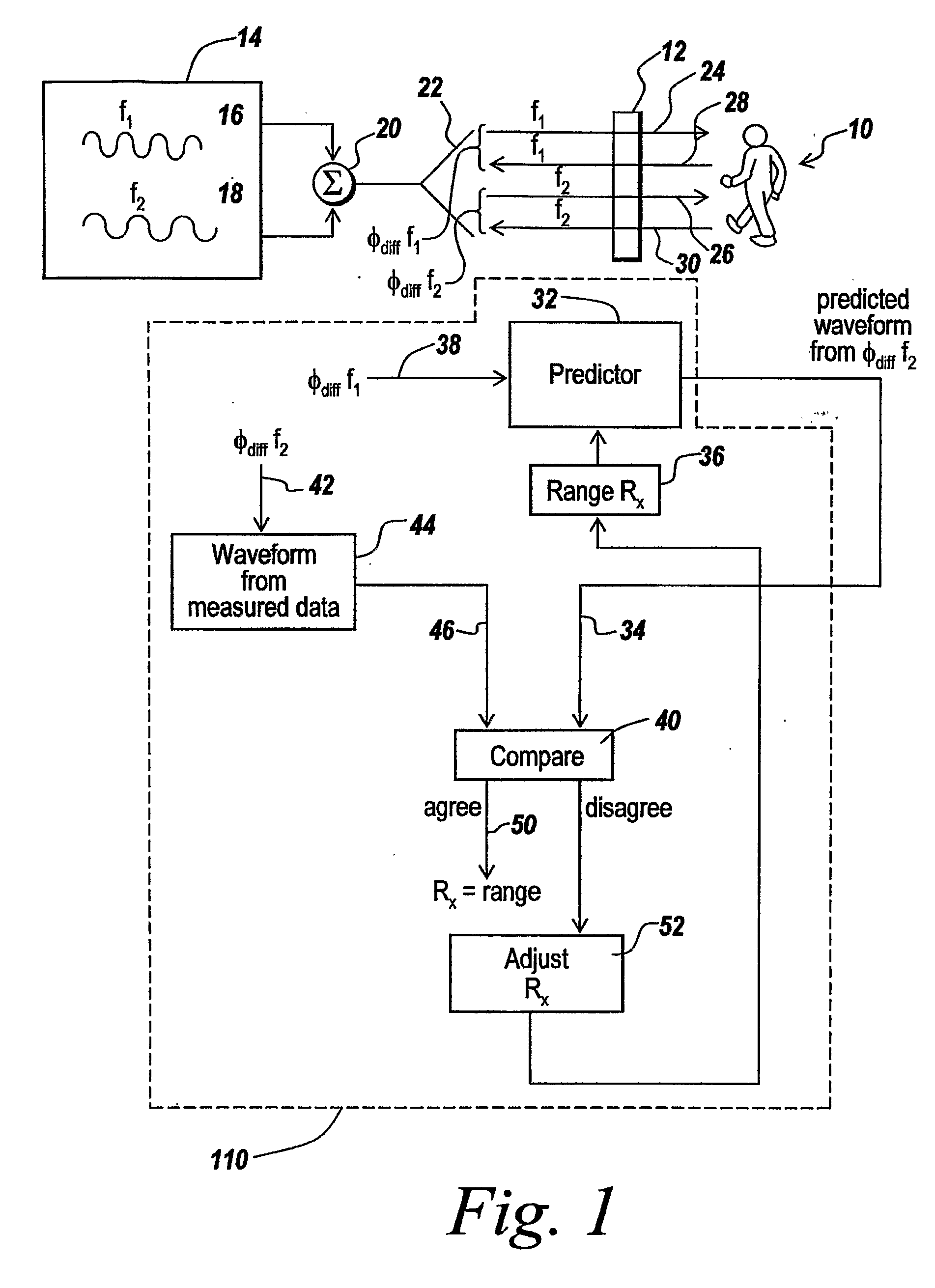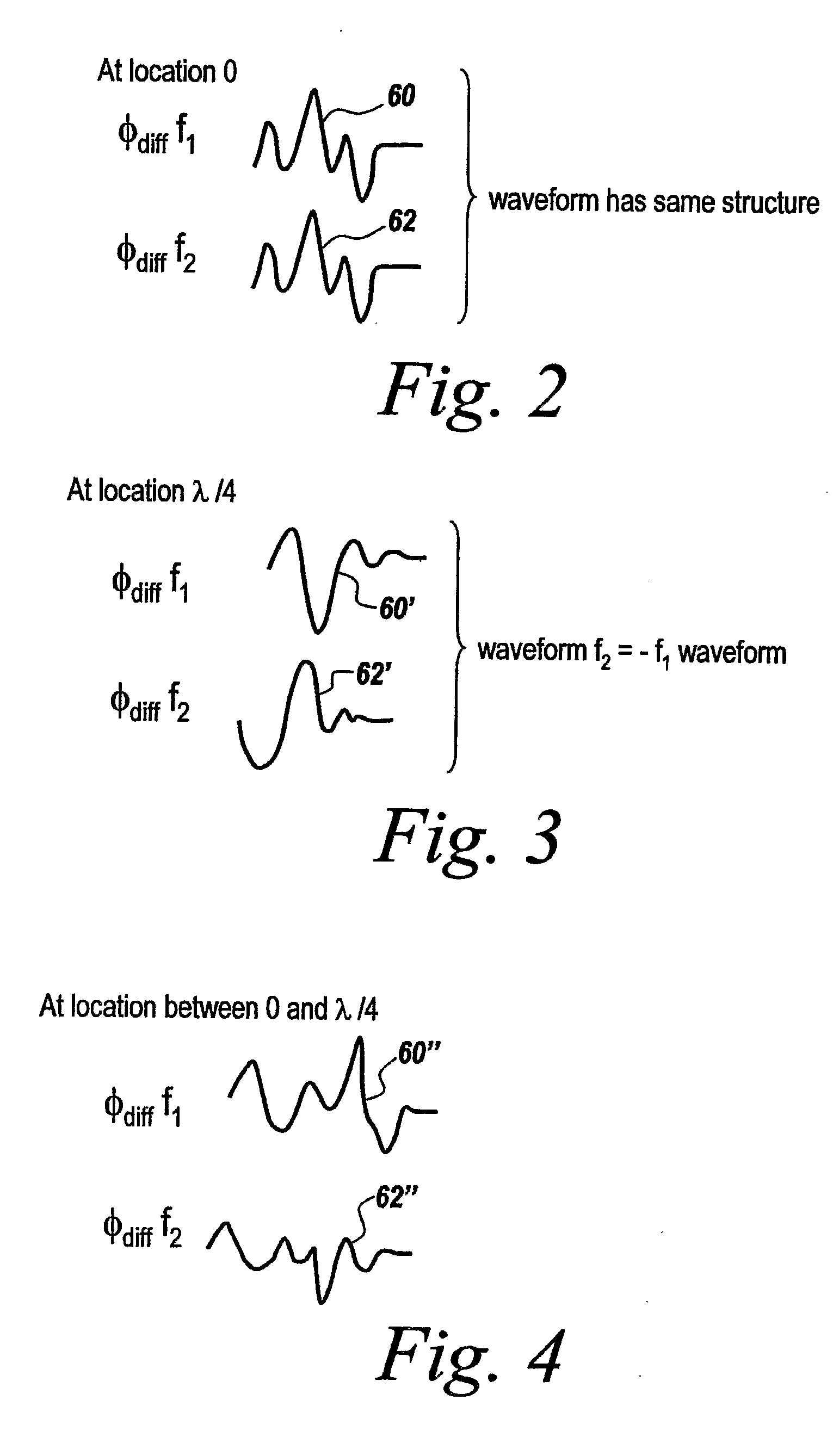Multiple frequency through-the-wall motion detection and ranging using a difference-based estimation technique
a technology of difference-based estimation and motion detection, applied in the field of through-the-wall sensors, can solve the problems of insufficient information for individuals, single-frequency radars that cannot permit the detection of range to the moving individual, and require fairly expensive hardware, etc., and achieves low power consumption, low cost, and convenient portability.
- Summary
- Abstract
- Description
- Claims
- Application Information
AI Technical Summary
Benefits of technology
Problems solved by technology
Method used
Image
Examples
Embodiment Construction
[0040] Referring now to FIG. 1, in order to detect the presence of an individual 10 constituting a moving object behind a wall 12, a radar 14 is provided, which transmits continuous waves 16 and 18 through a summation device 20 to an antenna 22. Antenna 22 simultaneously projects the two waveforms at f1 and f2 as illustrated at 24 and 26 through wall 12, where they meet object 10 and are reflected backwardly as illustrated at 28 and 30. The phase difference between outgoing and incoming waveforms for each of the frequencies is detected as will be discussed, and in one embodiment the waveform corresponding to the temporal phase difference for tone f, is coupled to a predictor 32. It is the purpose of predictor 32 to predict the temporal waveform that would be expected to exist for the temporal phase difference waveform at frequency f2 for an object at a known distance or range, with the output of the predictor being a waveform on line 34. In order for predictor 32 to operate, the pre...
PUM
 Login to View More
Login to View More Abstract
Description
Claims
Application Information
 Login to View More
Login to View More - R&D
- Intellectual Property
- Life Sciences
- Materials
- Tech Scout
- Unparalleled Data Quality
- Higher Quality Content
- 60% Fewer Hallucinations
Browse by: Latest US Patents, China's latest patents, Technical Efficacy Thesaurus, Application Domain, Technology Topic, Popular Technical Reports.
© 2025 PatSnap. All rights reserved.Legal|Privacy policy|Modern Slavery Act Transparency Statement|Sitemap|About US| Contact US: help@patsnap.com



